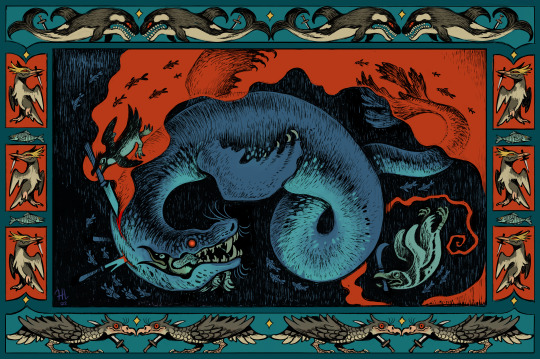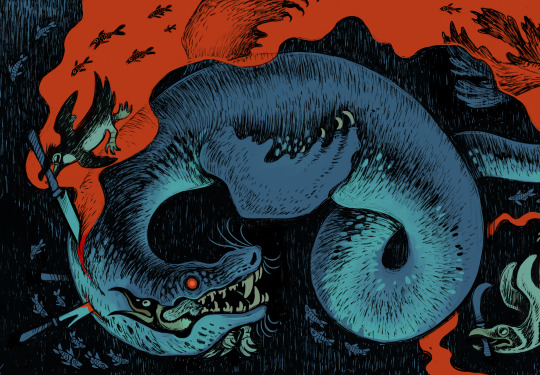Text

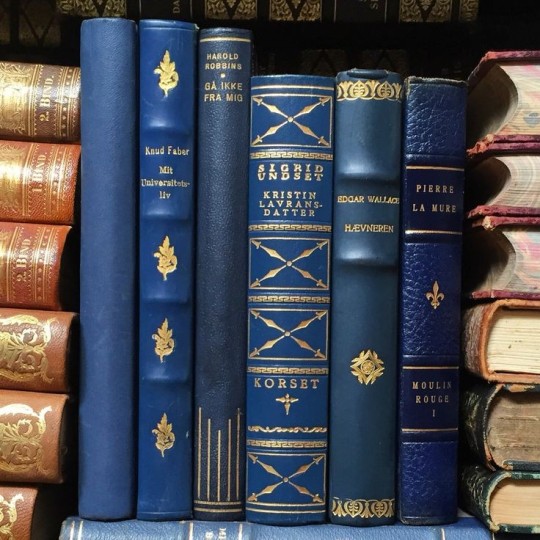







Indian Ravenclaw Aesthetic
For Ravenclaw, the Cleverest would always be the best
Other aesthetics: Slytherin | Gryffindor | Hufflepuff
@narcissa-black-supermacy @the-chaosbringer @in-flvx @padfootastic @gracelesslady23 @mycupofrum @just-another-godless-god @fiendishfyre @ad1thi @prongsfoot-wolfstar @siriuslystarbucks @xxmysticrose18 @ghostie-06 @pan-diasaster @h-m-i-a-n @constant-diablerie @satanicallysatanicchild
#harry potter#harry potter aesthetic#ravenclaw aesthetic#ravenclaw#aesthetic moodboard#ravenclaw aesthetic moodboard#moodboard#desi aesthetic#desi tumblr#indian aesthetic#indian academia#indian dark academia#desi dark academia#desi academia#indian#desi tag#im not desi#but this is genuinely beautiful
397 notes
·
View notes
Text
Welcome to The Desert, have a seat, we'll be here a while.
This blog is an HP inspired headcannons blog for wandlore, magi-botany and zoology, as well as some of my own work to be used in my own writing.
My work will often overlap between the actual science behind many real world plants, animals and rocks; as well as the ethnobotanical, mythological or religious ties to them. I am an aspiring ethnobotanist and folkloreist, and I take my work very seriously. If you take issue with my work feel free to message me and we can go over my sources as well as any additions or addendums to be made. Science by its nature is ever evolving and I pride myself on accuracy.
This blog is LGBTQ+ friendly, so if you're here because of JKR you can leave now, you won't be welcome here and you will be blocked and reported on sight.
I swear, so if that's something you're uncomfortable with please be wary.
I am an ex Mormon, and have a rather unfavorable opinion of a lot of religious institutions. This will be reflected at certain points in my work so please be wary if that makes you uncomfortable.
Professor Honey is my OC, both her and I are pansexual, consider ourselves to be Cis fem and use she/they pronouns. Her picture was made with @ummmmandy's picrew.
If you have any concerns with something I've said, written or reblogged please feel free to message me and I will address it. I want this blog and my writing to be as safe and inclusive as humanly possible. If something on here doesn't sit right with you, please let me know.
A lot of these writings will feel off for the HP universe, that's because I'm also writing up some of these for a magic system I'm developing for my own writing. Feel free to use them in your headcannons anyway however. Sharing is caring💛
Please don't repost my work to another site.
Be kind, be safe, be smart, and for the love of all that's holy don't be a bigot, I will find you.
-Alice, Keeper.
0 notes
Text
Wandlore: Tamarix ramosissima, AKA: Tamarisk, or Salt Cedar.
The science:

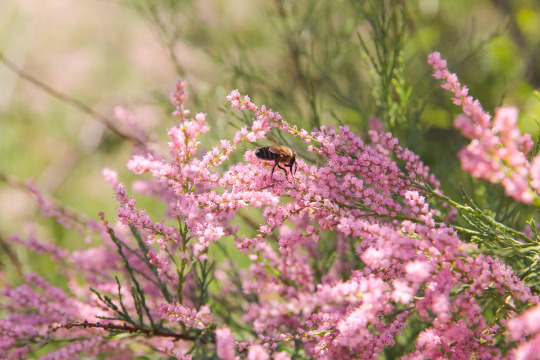
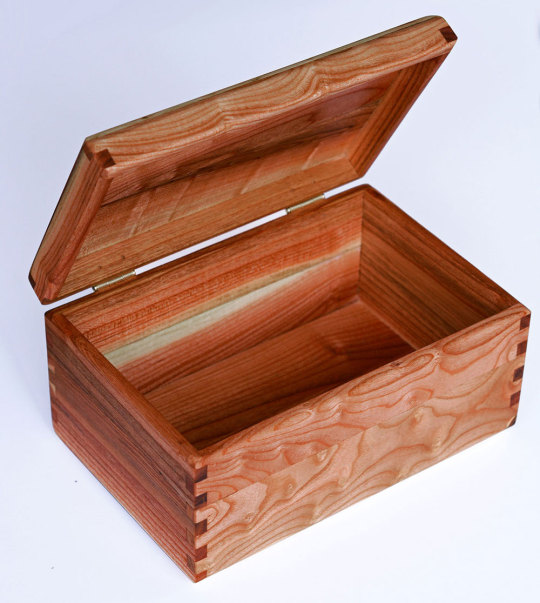
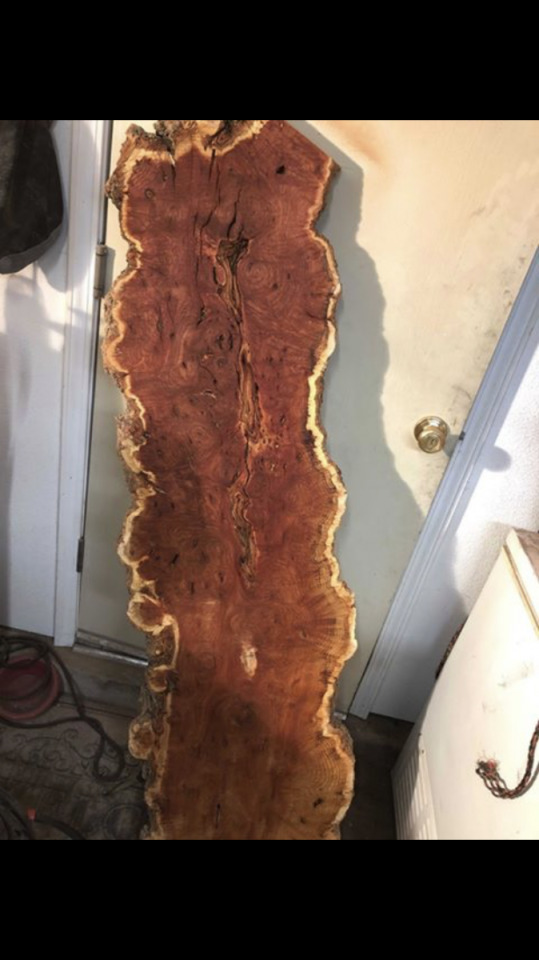
The Tamarisk, also called the Salt Cedar, is a shrubby, red barked tree native to some parts of Eurasia and Northern Africa. Tamarisk is known for sapping salt up from any water source near it into the soil around it, as its one of the only plants capable of surviving and thriving under those conditions. In the spring, it blooms a magenta, almost lilac pink in many places.
The Tamarisk tree was introduced to the Colorado River Basin in the late 1800s in an effort to stop soil erosion and keep trails clean. Unfortunately, the Tamarisk tree is Rhizomous, which means it can spread underground as well as through seed, and cuttings or fallen limbs from the tree can also root themselves. Accompanied by its tendency to increase the PH of the soil it lands in, the Tamarisk tree became a rapid menace to the southwestern ecosystem.
Because of this, if you take a river raft down the Colorado you are more than likely going to see hundreds or thousands of these trees along the banks. Places where native Cottonwoods or Willows would normally be are filled to the brim with salty earth and red tamarisk trees.
Luckily, there is a small glimmer of hope. The tamarisk beetle, a small golden yellow weevil, no bigger than the head of a pin, eats exclusively tamarisk trees. Careful introduction of the tamarisk beetle to these trees has begun to curb their expanse. Unfortunately, there are still precious few plants that can survive the salty soil the trees leave in their wake, and the thousands of dead trees alongside the river feel an awful lot like walking through a Grove of ghosts.
Ethnobotany and Mythology:
The tamarisk tree has a vast and ancient set of mythological and religious symbolism behind it. In its native range, the tamarisk tree has long been connected to death and rebirth through the story of Osiris's death in Egyptian paganism. When Osiris is killed, his body is hidden inside the trunk of a massive tamarisk tree, for Isis to find and revive.
This connection to hidden things is also noteworthy, as in the Iliad, Odysseus and diomedes hide some of their spoils from the war inside a Tamarisk. In another Greek myth, a young woman or girl is turned into a Tamarisk tree, along with her siblings. However, it should be noted that many diffrent women, girls, nymphs and goddesses turn into trees, plants and shrubs in mythology, and they are often mixed with each other at one point or another.
In abrahamic religions, many characters are said to gain important knowlage under tamarisk trees ( such as the ever present abraham) or have been buried underneath them (Samuel)
In Islam, they take on a more spiteful turn, as Allah converts the gardens of the saba people to Tamarisk and bitter fruits as punishment.
In the southwest, where they have taken root, they symbolize that same sort of spite as well as a stubbornness for life.
In both their native and invasive ranges, the tamarisk tree is used for making sturdy and durable goods. Things like furniture, wagon wheels, and boxes. The wood itself is beautiful, if occasionally difficult to work with. Medicinally, the tree has been used in traditional practices to treat digestive issues, gut problems, diabetes and dental issues to varying degrees of success. It has also been used in soaking and purifying baths well into ancient times, as its mentioned that gilgamesh's mother took a bath in a Tamarisk soak before sending her son and his partner on their quest.
The magic
Taking all of these sources into account, it's safe to say that the tamarisk tree would have a very specific arcane niche to fill: stubbornness, secrets, and toxicity. The protective aspects of the tree are numerous of course, but often come in unexpected ways. Wands or other foci made with Tamarisk would likely do an average job with standard protective magics, but astonishingly well at protecting those who are already dead, or secrets that one would wish to hide for eternity. These Foci will aslo do an excellent job with purifying Charms and intense purification rituals, perhaps even exorcism if done correctly.
It should also be noted that the high salt content of the Tamarisk tree is two fold: it will aid in its protectiveness, of course, but it may also be a sign that the owner of the foci in question may drive others away in their personal lives. They will be steadfast and stubborn, and good at what they set themselves to task over, but God's forbid they form a true lasting relationship with anyone who isn't exactly like them. This may present itself as a mild sort of closed mindedness at best, or outright hatred of others at worst. They may be xenophobic, religious zealots, or even simply abrasive. This isn't to say every person who possesses a tamarisk foci is an asshole in this way, but it would be fair to say they are more likely to hold their own opinions in the highest regard before any other.
These will be the people who work very hard at what they do, but never really make any real connections. The people you meet who will gruffly get the job done, but demand solitude or like minded individuals in order to work at all.
Let it be known that these individuals, no matter how strong they appear to be, will have at least one glaring weakness to them, and they may be extremely suseptable to failure if they confront it. Due to their stubbornness, this could very well be their downfall if they refuse help.
These foci will pair best with others who have connections to Tamarisk, and will likely pair worst with those who have willow, cottonwood, fruit tree, or other stereotypically sweet or less hardy woods.
#wandlore#hp headcanon#botany#ethnobotany#mythology#tamarisk#salt cedar#saltcedar#magic headcannons#Tamarix ramosissima
4 notes
·
View notes
Text






The fact that this joke is from the very first episode (which aired in January 1997) is messing with me.
74K notes
·
View notes
Text
just did a background check that made me list every address i've lived at as an adult. i have lived a lot of places (like a dozen different addresses) so i had to piece together where i've lived over the years from my saved addresses on dominos.com. not my proudest moment tbh
27K notes
·
View notes
Text
Wand Woods in the American Wizarding Confederation
All my love to @americanwizarding for the AWC which they created!
While all wands are capable of performing a full range of magic, it is common knowledge in the wandlore community that certain woods perform better in diverse areas from their compatriots. These differences vary from wood to wood, augmented by their cores, length, flexibility, and the mage they bond with. While we may be able to generalize most woods and cores, an exact science remains impossible with the addition of the human element. Furthermore the trees of America produce magical effects and demonstrate properties that are far different from their European counterparts. Below are 33 examples of popular wand woods used in the AWC.
Black Walnut: The Patronus Wand The American variety of Walnut is possessed of qualities far unlike that of its European counterpart. Black Walnut wands tend to be paired with masters who imbue the woods prefered qualities of intellect and insight. Potent in all manner of charms, Black Walnut wands are some of the best suited of American wand woods for the production of powerful Patronuses and other defensive magic. While the wand will never turn against its original owner, even if taken in battle, the Black Walnut wand has one very specific foible; it will never function properly for anyone who is not true to himself. This particular quirk has led to the phrase “Darkest Walnut for the Brightest Souls”. Black Willow: The Mental Wand While the European Willow may pair well with the underachiever, the Black Willow prefers those who are themselves insecure and unsure. Strongly attuned to the inner natures of its owner, Black Willow fuels itself upon those negative feelings. Black Willow holders have noted that bleak periods of depression usually manifested powerful magical abilities that seemed to devour their dark moods. Magical Psychologists typically keep a Black Willow wand on hand to counter and offset the depressive symptoms of their patients. In owners who overcome their darker moods, the Black Willow proves itself a powerful wand, excellent for mental magic and spells that deal with ghosts and other ethereal beings. Black Cherry: The Passionate Wand Boasting far more power than their Asian cousins, the American Black Cherry is a deadly force to be reckoned with. This is odd because the nature of Black Cherry prefers artists and philosophers over battlemages and duelists. Owners of such wands tend to be flamboyant and mercurial in emotions and perceptions, but in times of need boast reliability and loyalty. The nature of the Black Cherry wand seems to be that it enjoys the chaos of wild and dangerous magic as much as it loves the beautiful madness of the artist’s mind. Black Cherry takes quickly to elemental magic, particularly fire and air. Of note, MACAWIC did consider banning the wand wood during the late 1800’s after a spate of violent feuds between painters of rival schools. Osage Orange: The Methodical Wand A preferred wand of the battlemage, Osage Orange may lack the brute power of other wands but makes up for it in its accuracy and reliability. Owners of such wands tend to be methodical thinkers and pragmatists, as the nature of the wood conflicts greatly with any discord or disorganization. During the initial colonization of the New World by European settlers, Osage Orange wands were prized among the settlers looking to fight against the native tribes who were defending their land. It was because of this connotation with the wood that it fell out of favor during the early 1800’s only to make a strong comeback with the reintroduction of International Dueling Exhibitions in the 1950’s.
Honey Locust: The Technical Wand A strong wood of reliability and logic, Honey Locust pairs best with mages who display a technical bend of thinking. Honey Locust’s properties mean that it is perhaps the most accurate and delicate of wand woods available today. Highly desired by mages who work in experimental magic, especially magic involving technology as Honey Locust seems to not disrupt Mundane Technology as much as other woods, it tends not to function as well with flashy and violent spells. Honey Locust performs its best magic when used in conjunction with non-verbal magic. The MRD keeps a cache of Honey Locust wands for use in its experiments, and it is a well known historical fact that the mages involved with the first magical spaceflight all used wands of this wood. Flowering Dogwood: The Prankster Wand Prankster by nature, the Flowering Dogwood enjoys a wild and chaotic nature bending towards mages who dislike calm and quiet. Typically refusing to use non-verbal magic and magic that has no visual or auditory effect, owners of Flowering Dogwood wands are more likely to violate the International Statute of Secrecy over all other wand woods. One should not think though that this wood cannot be taken seriously as many famous duelists wielded Flowering Dogwood wands to amazing effect. Wands made of this wood are best suited to using transfigurations and illusory magic, specifically illusions that affect all five senses at once.
Blue Ash: The Explorer Wand Early American explorers were armed only with wands made of Blue Ash for good reason. Blue Ash wands tend toward potent defensive and survival magic and make excellent pairings with naturalists and magizoologists alike. Best bonding with those of brave or at least inquisitive dispositions, Blue Ash proves itself in moments of great need or mortal peril. While it does poorly with loud magic, the Blue Ash is one of the best wands for the transfiguration of natural materials and in particular food. Today some of the greatest chefs in the magical world use wands made of Blue Ash.
Eastern Mayhaw: The Silent Wand No other wand wood in America has as dark a reputation as the Eastern Mayhaw. Used by Lady Isabelle Temper during her reign of terror, the Mayhaw owner is sometimes unfairly looked upon with distrust by the magical community. Eastern Mayhaw wands pair best with solitary thinkers and other introverts who dislike large groups of people and the noise they bring. Mayhaw wands are well attuned to the subtle magic of silence and death and so are comfortable with non-flashy charms and curses alike.
White Pine: The Regal Wand Purist families had long praised the properties and powers of pine wands, believing that like Elm wood they would only perform for Pure-Blooded mages. This is of course nothing more than empty boasting and blood prejudice. White Pine is prized because it typically bonds well with those of more regal and serious demeanors, avoiding the jocular and uncouth. Wands of White Pine perform their magic reliably and quietly; one rarely can ever get a wand of this kind to perform loud and flashy magic. Non-verbal spellcasters excel easily with White Pine, and those suited to quiet lives of study or in the salons of the wealthy will find a mutual friend in their wand.
Red Mulberry: The Miner Wand So-called the wand of the backwoods because of its popularity in the Appalachian Mountains of the AWC. In truth the Red Mulberry enjoys its reputation because of its deep affinity for underground spaces and earth magic. Wands of this sort are possessed of natural abilities for dowsing and divining precious metals, gems, and lost treasures. Old magical families have jealously guarded Red Mulberry trees capable of producing wands in order to limit their rivals treasure hunting prowess; a danger that could undercut some of these old families own methods of gaining wealth, that is prospecting. For those not inclined to hunt below the ground the Red Mulberry pairs well with calm and patient mages. Red Mulberry is known for its slow learning curve with new spells, but its innate precision and reliability more than make up for this downside.
Red Cedar: The Questing Wand The wand of the mage with a purpose in life, Red Cedar pairs well with those disposed to questing. A steadfast wand wood that prefers owners of strong character and moral fiber who cannot be swayed from their cause by any means. While owners of Red Cedar do tend to be hard headed, this does not mean that they are fundamentalists or extremists, rather they are devoted to their cause. Red Cedar performs well with most charms but does seem to falter with most curses and dark magic.
Hackberry: The Naturalist Wand The AWC’s famous “mountain men” (who were mostly women) were known to prefer wands made of Hackberry as their magic blended well with the wilds of the frontier. Today the Hackberry wand is drawn to those who prefer the outdoors over the indoors and those who aren’t afraid to leave the forest path. With a bend towards naturalistic magic that gives power over plants and animals, Hackberry wands are found with magizoologists and magical explorers searching for lost cities hidden by ancient enchantments. Much of the Hackberry’s draw is that it’s magic is sometimes completely indistinguishable from nature itself.
River Birch: The Diplomatic Wand The wand of many languages comes from the river. This old quote from early settlers speaks to the nature of the River Birch wand, namely that it has strong ties to magic affecting language and sound. River Birch owners tend to be diplomatic in nature and excellent public speakers, unafraid of crowds or being the center of attention. River Birch wands excel at magic aimed at infusing the spirit or decoding messages and languages foreign to the owner. While it may not be the most powerful in a battle, owners of River Birch wands tend to be so good at diplomacy that they never need enter battle at all.
Apple: The Healer Wand Apple wands are the providence of the caregiver and the supporter. Excellent wands for healing and teaching, Apple wood rejects all dark magic and openly embraces restorative and protective charms. Owners of such wands are of a caring nature and are not afraid to put the needs of others before their own. Refusing outright to turn on their original owner, Apple wood wands can and will in fact conspire to return to their rightful master sometimes using their own magic to effect an escape.
Scarlet Oak: The Honor Wand Fiery personalities find themselves reflected in the nature and power of the Scarlet Oak. A wild and difficult to tame wand wood, the Scarlet Oak bonds with owners of wild passions and a strong sense of personal honor. Preferring that their respect be earned, some wands won’t perform properly until it and its owner pass through some manner of trial or tribulation. Best suited for battlemagic and other violent spells, a wand of Scarlet Oak will flat out refuse to cast non-verbal magic, believing it to be dishonorable.
American Hornbeam: The Rival Wand Unlike their European cousins the American Hornbeam strives to challenge and rival its wielder, requiring effort and work far beyond that of other woods. Bonding with those who never back down or surrender, Hornbeam wands are actually prized amongst American aurors who view the quirk of the wood to be extremely beneficial to their work. As Hornbeam grows as its wielder overcomes challenges, the aurors who wield them tend to be some of the most powerful mages in the AWC.
Mesquite: The Morphic Wand A wand of fire and change the Mesquite wand is comfortable in the hands of either a duelist or a transfigurer. Able to handle the complex magic needed for advanced and sometimes dangerous transformations, wands of Mesquite bend morphic fields better and faster than other woods. In the hands of a fighter though the woods propensity for effecting change manifests itself in the wide variety of disfigurements and disabilities one can inflict upon an opponent. Some of the most popular, and conversely dangerous, curses of the late 20th century were invented by mages who owned Mesquite wands.
Catclaw Acacia: The Moral Wand As fickle as their name implies the Catclaw wand only allies itself with a mage of strong moral standing and impeccable demeanour. Oddly the Catclaw wand is perhaps one of the best at producing curses and other forms of dangerous magic. Some theorists believe that the wood itself is aware of its own power and potential for destruction, and that is why it only bonds with mages who are able to hold themselves in check. It is true that while the wood of the Catclaw could produce devastation on a large scale, it never has as wielders of such wands have yet to be counted amongst the ranks of dark mages.
California Laurel: The Optimists Wand Laurel wands are known for their glow, gained from the decades spent absorbing the golden sun of California. Pairing best with those who have a positive world outlook, Laurel wood sets itself apart from other woods in its ability to oppose magical influence of the mind. Many Laurel owners are highly accomplished Occlumens, even able to spread their mental protections to those around them. Laurel wands rarely take to dark magic or even the slightest curses, as harm to others seems to be an abhorrent concept to them.
Desert Ironwood: The Survivor Wand The survivor’s wand links itself with those who have the courage and the ability to overcome the trials set before them. Ironwood earns its name through the power it applies to survivalist magic and protective charms, both of which experience strong boosts when cast by such wands. While wielders of the wood may be strong in body, they are also strong in spirit and belief. Many well-known activists and campaigners for change were owners of Ironwood wands, a testament to the woods affinity for strong souls and brave hearts.
Douglas Fir: The Helper Wand Choosing from mages who are by their nature selfless and caring, the Douglas Fir amplifies any protective or nurturing magic that is used upon another. Mages who cast Shield Charms on their friends and loved ones find that when using a wand of this wood, those charms become almost unbreakable. While Douglas Fir wands are commonly found in the hands of Healers and caregivers, they are also well placed amongst aurors and agents of the Department of Secrecy and Obfuscation.
Bristlecone Pine: The Warrior Wand It should come as no surprise that many of the wand woods harvested from within the AWC are well adapted towards war and battlemagic. After all the continent is one of revolutions (American and Mexican to name two), wars between nations (colonists vs first peoples), and ever-shifting changes. But of all the wands that excel at combat all are outshone by the Bristlecone Pine. A wand that demands a fighter and accepts no less, a wand that desires to pass through combat and return a hero, a wand that seeks enemies to overcome. Never get in the way of a mage with a Pine wand, it may be the last thing you do.
Rocky Mountain Juniper: The Ambitious Wand Juniper wands are wands of youthful spirit and high ambition. Keepers of Juniper wands are known for their youthful attitude, playfulness, and desire for a higher purpose. Producing charms of great intricacy, as well as excelling in emotional magic, makes wands of this wood very popular with popular people. Both well known celebrities, Quadpot athletes, and politicians in the Magical Congress wield Juniper wands, a sign of the woods driving ambition.
Silver Spruce: The Introvert Wand Highly desired for its deep gray color, Silver Spruce wands are as somber as their preferred match. Useful in all forms of divinatory magic wands made of this wood typically function at their most powerful when alone with their owner. It seems that the presence of other mages leads to some flaw in the Silver Spruce wood that decreases its potency, yet this quirk is not seen when the wand is surrounded by Mundies. As the wood will only bond with a consummate introvert, and typically one touched with the Seer’s gift, the fact that Silver Spruce dislikes company rarely poses a problem for its owner.
Golden Aspen: The Beautiful Wand Producing perhaps the most beautiful and heartbreaking magic of all wand woods, the Golden Aspen seeks out those with imaginations and dreams far beyond their contemporaries. Blossoming forth charms of colorful and audible beauty, Golden Aspen is almost incapable of producing non-verbal magic or even any type of quiet and hidden spell. It is a wood that desires to be seen and experienced by everyone. Augmenting its power by tapping into the imagination of the one it bonds with, Golden Aspen can bring such wonders as its owner dreams into reality. Prized by authors, actors, painters, and dreamers alike, this wand is known for its almost conscious disregard for the International Statute of Secrecy.
Alpine Larch: The Stormcloud Wand The environs of the AWC are notable in their diversity of geography and weather. Alpine Larch wands embody this fact with their bend towards meteorological magic. Seeking for their own a mage with the soul of a storm, the Larch wand proves itself to be almost unstoppable when enraged. Truely, early dark mages were known for wreaking havoc with Larch wood, most notably Anders Borkman the notorious “Storm Bringer”. Other than weather magic the Larch responds well to spells that affect the four basic elements and charms that purify air and water.
White Fir: The Creature Wand White Fir is the wood of the fauna of America. Attracted by mages who don’t seek to subjugate but rather co-exist with the natural world, White Fir wands find themselves best suited to naturalists and magizoologists. Unlike wand woods like Hackberry and Pawpaw that bend nature, White Fir rather does its best when it is helping nature to grow its own way rather than the way a mage feels it should. Owners of such wands are usually predisposed to innate abilities like Snake-Talking, Bird-Kissed, or even Stone-Speak.
Ohio Buckeye: The Servile Wand Unlike other wands, the Buckeye willingly twists itself to conform to the needs of its chosen mage. Buckeye looks for mages of vastly diverse interests and qualities; specifically jacks-of-all-trade. Its propensity for change makes it extremely useful as a utilitarian wand, but because it adapts so quickly it can also become quite dangerous. Mages testing out new spells may find them too powerful to begin with, resulting in accidents and potentially fatal backfires.
Giant Redwood: The Unyielding Wand Standing tall, proud, and true are characteristics Redwood wands look for in the mages they choose. Picking only those who are willing to be themselves no matter the cost, Redwood supplies its owner with a powerful knack for dueling and other martial magic. A wand of lost causes, history has shown time and again stories of mages armed only with Redwood wands turning the tide of battle, or rallying others to their cause. Extremely rare, the AWC considered banning the wood due to concerns over the endangered state of the species.
Yellow Poplar: The Extraverts Wand The wand of the people pleaser, the party animal, the center of attention. As even the Europeans say “the Poplar is Popular”. Boosting advanced power for charms, Yellow Poplar bonds best with extraverts, but not with those who are full of themselves. Rather it selects for itself the outgoing individual whose personality seeks to build up those around them, rather than tear them down. Yellow Poplar produces amazing results with human transfigurations, particularly those that only alter appearance much like Mundi makeup.
White Elm: The Dominion Wand White Elm is the wood of both the strong-minded but careful leader and the fanatical despot. Enjoying a period of heavy use during the AWC’s slavery era, White Elm is known for its potent mind control and mood altering properties that have given it such a dark reputation over the years. Today many wandmakers refuse to use the wood out of both disgust at its history and fear of what it could do in the wrong hands. However one should not judge current wielders over past events. Today most of the justices on the Supreme Wizengamot own White Elm wands, a sign that the wood also has a strong propensity for justice, in the right hands.
Pawpaw: The Building Wand The wand of farmers loves those who study herbology and live for the feel of earth between their fingers. Pawpaw bonds best with mages who prefer to use their own hands rather than simply cast a charm or a spell. This does not mean that the wand refuses to help build, far from it. Pawpaw wood is best known for its ability and focus in fabrication magic and in the hands of a talented builder or even artist, it can construct modern wonders. Farmers, construction workers, hands-on artists, and even architects and designers find that Pawpaw wands are drawn to them and their self-made nature.
Eastern Redbud: The Seeker Wand “Nothing is lost under the Redbud’s eye” was an old phrase concerning the properties of the Redbud wand. Like the Silver Spruce, Redbud has a potent affinity for divination magic. However while the Spruce may be better at seeking the future, Redbud seeks in the present. Location magic and spells of revelation are far more powerful when cast with a Redbud wand then any other wand wood. AB-DENS is always sure to keep spare wands of this wood on hand for cases of prisoner escapes and missing persons. Redbud binds best with the inquisitive, especially those who never stop asking questions.
65 notes
·
View notes
Text
EPISODE FOUR: SORTINGHATCHATS SORTS HOWL’S MOVING CASTLE
In the way we play this sorting game, Primary Houses are WHY characters do things & Secondary Houses are HOW characters do things.
If you’d like to understand the exact House definitions we’re working off of, please read more in our basics post here: https://sortinghatchats.tumblr.com/post/190658528257/the-sorting-hat-chats or check out our interactive quiz here: https://ejadelomax.itch.io/sortinghatchats
Howl’s Moving Castle’s cinematic adaption is a particularly divergent one. Themes, setting, worldbuilding, magic, and characters all transform significantly, turning a tongue-in-cheek British fairytale into a vivid Miyazaki adventure rich with its standard semi-monstrous transformed love interest and a heavy anti-war message.
The book and movie are… very different experiences. But how do the sortings compare across the two adaptions? Howl is a very different sorting in each– Sophie, interestingly, is not.

While book!Howl is a Hufflepuff Primary, who undercharges poor people and tears the heart of his chest to save the life of a star, he is a specifically Burned Hufflepuff (what’s a “Burned” House? Read more here). Howl thinks he should be a Gryffindor – he maligns himself often as a “coward” despite repeatedly going out of his way to help people. The way in which he acts and helps others isn’t the way he’s been told is right.
Howl actually is a Gryffindor Primary in the movie, fighting the good fight even as his comrades and schoolmates fall around him or slip away to corruption. While he’s tired and beaten down, heavy with self-hatred, he’s got an inner certainty of right and wrong that he’s willing to destroy himself to live up to.
Now let’s talk methods. Book!Howl is Slytherin Secondary– a slitherer-outer, a charmer and a gleeful liar who distracts himself and others while still achieving his goals. It’s a delight.
Movie!Howl has a Slytherin Secondary model, only. It's… less of a delight. When he cajoles, flirts, and throws tantrums in the movie, it’s a harsh and posturing act. Part of his journey is learning how to drop that model, which he doesn’t like, and instead embrace the Gryffindor Secondary he shares with Sophie.
One of the divides between the two works is this: The movie leans into themes of self-perception – of seeing one’s beauty beneath a curse or a monstrousness.The book leans more into themes of othered-perception – how do people view each other? How does reputation and perception affect them? What does it mean that Howl has so many names?
You see it in Sophie’s changing conceptions of her stepmother, in Martha and Lettie’s swapping of faces and destinies, and in the slow reveal of Howl’s true character and context. As Sophie says to the king– “he’s a mess!”
The movie transforms Howl – he changes and becomes happier and more himself. The book discovers Howl – while he is the same at the beginning and end of the book, effectively, the reader’s and Sophie’s perceptions of him change dramatically. Howl himself doesn’t change. You just get to know him better, to understand his pettiness and his heroism, and to decide he’s a trashfire worth loving.

Despite Sophie coming across very differently in the book and the movie, she actually maintains her sorting in both mediums. She’s a Gryffindor Primary, with a strong inner compass, and a Gryffindor Secondary, who values acting with integrity and honesty.
Book!Sophie doesn’t look that way at first. At the start of the story, she’s Burned. She’s living under a heavy Ravenclaw Primary model which pens her in with rules like “the eldest never succeeds.” She also has tamped down her combative Gryffindor Secondary under a polite and dutiful Hufflepuff Secondary.
Over the course of the book, she grows back into her sorting– going toe to toe with the witch or with Howl, speaking her mind, swinging weed killer– but even in the earliest chapters you can glimpse a frustrated Sophie dropping her model to snap at a customer that her hat is ugly.
Book!Sophie doesn’t like to pretend or prevaricate. Becoming an old woman frees her from the “good girl” she’s supposed to be, and it’s in that cackling, unstoppable force that you find Sophie’s sorting. When she thinks no one is holding her accountable, she acts on her gut, she snaps back, she fills her life with good things, chaos, cleanliness, and joy. And by the end of the book she gets to realize: no one who matters is holding her accountable. She decides her own fate.
In the movie, Sophie takes a different journey to the same eventual sorting. While we’re arguing her a Gryffindor Primary for the sake of the parallel, she’s just as easy to read as a Hufflepuff Primary. Regardless, she’s an Intuitive Primary (Gryffindor or Hufflepuff), rather than a Decided one (Ravenclaw or Slytherin). Some things are just wrong, and Sophie knows it. Her Primary doesn’t see much growth over the movie– she’s a good person with a good heart at the start, and that only continues.

Her growth is most clear in her Secondary. Like in the book, she’s a Gryffindor Secondary, and, like in the book, that’s something the world has tried to squish out of her. She buries it under other coping mechanisms, but the chaos of Howl and the tumultuous big world forces her into her element.
The way her Gryffindor Secondary shows itself, however, shines a little different than in the book. She acts out and unintentionally wins the loyalty of enemies and bystanders alike. They’re drawn to her honesty, integrity, and thoughtless bravery. She’s just good, and it sways people to follow her– you see it with Sullivan’s dog, the witch, and Turnip-Head the scarecrow.
Both Hufflepuff and Gryffindor Secondaries “collect” people, gaining power and efficacy via those who love or respect them, but Hufflepuffs tend to build communities, whereas Gryffindors tend to build armies– people willing to follow them.
Calcifer also maintains his sorting across both adaptions: Slytherin/Slytherin and perfectly happy in it.
In the book, we’re told that fire demons are inherently amoral, with no sense of right or wrong. This is both true and not for Calcifer. On one hand, he’s not a Gryffindor like Sophie– he doesn’t care much for right and wrong on their own behalf.
But he’s hardly as “evil” as fire demons are painted, either– This is another place where the theme of “perception” and public reputation raises its head. It’s just that his morality is simple. He likes Howl; he likes the people Howl loves, like Sophie and Michael. He fights and works to keep them safe and happy. When he’s freed, he comes back.
It’s a Slytherin Primary’s morality– to stay loyal, to love hard, to defend yourself and your loved ones first. And it’s interesting to see this trait come from a character who, once upon a time, was saved because a stranger gave him a heart to hold.
Want to hear our full take on sorting Howl’s Moving Castle? Check out our Sorting Hat Chats podcast on Spotify, Apple Podcasts, or at http://sortinghatchats.castos.com/
Like our system? Explore it through our sorting quiz here: https://ejadelomax.itch.io/sortinghatchats. You can argue with it!
#sortinghatchats#howl's moving castle#howell jenkins#burned hufflepuff#book howl being a burned hufflepuff explains a lot about myself and now im confuuused
269 notes
·
View notes
Photo


burned hufflepuff primary • burned hufflepuff secondary
60 notes
·
View notes
Photo





A Inside Look at Wand Cores
Requested by: @kiwi-ghost
There are many different factors that attribute to crafting wands and choosing the materials to do so. Different countries have varying methods and laws pertaining to procuring said materials.
Wand Components:
All Wands must contain a minimum of one Wood and one Core. However, with in very rare occurrences they can have a dual-core or a blended core in their wand. Although, it is ill advised to have more than two cores as that can cause fatal backfires. While its not possible to blend the wood of the Wand, you may have a Wand Handle of one wood and a Body Wood of another. Normally in these cases, the Handle represents the Heart of the Witch or Wizard. The Body of the wand generally represents the Witch or Wizards outward appearance.
Characteristics of Wand Core Materials:
The core of a wand is a magical substance placed within the length of wood. They are usually bits of hair/feather extracted from some sort of Magical Being or Creature. The materials used for wand cores can vary widely, though certain wand-makers may prefer to use certain materials; for example, Garrick Ollivander discovered and pioneered the use of phoenix feathers, dragon heartstrings, and unicorn tail hairs, whereas his father used lesser substances such as Kelpie hair and Kneazle whisker.
The core type is known to influence the “personality” of the wand produced with it. For example, the wand-maker Garrick Ollivander will not use Veela hair for cores because he believes they make for “temperamental” wands. Thestral hair wands are also an interesting core, in that it cannot simply be “mastered” by winning them; Thestral tail hair is a powerful and tricky substance that can only be mastered by a witch or wizard capable of facing death.
The wand always chooses the wizard or witch and not the other way around. This is a question that many who study wands called wandlore cannot understand or explain. It would seem that wands have in some sense of the word—a mind of their own. The Wand will never surrender itself to another easily either - something many in wandlore understand to some extent.
____________________________________________________
Core Materials:
Dragon Heartstring - Powerful with a lot of magical “heft”, easy to learn spells though can easily be committed to another owner. It is not the core you want for subtlety, but for sheer power it is definitely the best. Although it is the most common core among Dark Wizards, Dark Wizards are most certainly not their most common users.
Phoenix Feather - Very versatile. Learns most varied magic, hard to be chosen. Its main strength lies in Defense Against the Dark Arts, although its adaptability can wrench it to hexes and jinxes if need be. As with the dragon heartstring core, the phoenix core is common amongst Light Wizards, but its users are not necessarily Light Wizards.
Unicorn Tail Hair - Consistent magic, bonds strongly to first user. A more subtle wand, but it is quite compatible with Charms and Transfiguration. It is also hands-down the best core for healing, as it picks up some of the healing capabilities of unicorn blood. Unicorn hair also has a reputation of picking gentler or more cerebral users.
Acromantula Web - Using a wand with this core has been illegal in Britain since 1782, after it was discovered that the wielder of this type of wand has particular ability with Dark magics, especially the Imperius curse. There are certain diplomatic exceptions, as it is a traditional core for Asian wands, but even those are temporary, and many wizard diplomats on long-term assignments find themselves compelled to procure replacement wands for their stay.
Augurey Tail Feather - Augureys, or Irish phoenixes, were once associated with powerful Dark wands, as their cries were thought to signify an upcoming death. However, they were in reality never a strong Dark core, and were more accurately a powerful core for Divinations. Misunderstood students may find themselves bonded to an augurey wand, although these wands are altogether quite rare.
Basilisk Horn/Skin - These wands are incredibly rare, as the beasts are rare to begin with and hard to kill. Due to the rarity, they often are passed down from generation to generation, so basilisk-core wands are either the heirloom of Slytherin-type Pureblood families or reforged wands from family cores. The occasional new basilisk wand will almost always bond to a Parselmouth or budding Dark Wizard. Very little good comes out of wielders of basilisk wands.
Billywig Stingers - Are not common in Britain, but are occasionally imported from Australia, the native habitat of the Billywig. Billywig wands bond almost exclusively to light-hearted pranksters, and are extremely capricious- at one moment it will produce the strongest Cheering Charm in the school, but another time it will object to being used as a potion stirrer and siphon up hours of work without so much as a by-your-leave.
Chimera Scale Fragment - Although chimera scales are magically powerful, they are extremely rare in modern wandcraft. This is not out of any concern for safety, as they are generally considered no more stubborn than hippogriff feathers, and are more stable than Erumpent hide. The fact of the matter is that there are more recorded basilisk slayings in the past fifty years than there are chimera slayings in all of recorded history. This one slaying occurred in Greece over two millenia ago, so what scales were harvested at that time have been degraded, broken, and dispersed.
Today, they are only found as parts of heirloom cores, and even then, all such cores are a more common core (often dragon heartstring) with a tiny fragment of scale embedded. Chimera wands are most common in Greece and the Balkans, although as they were circulated through the Mediterranean and former Roman Empire they are found throughout Europe. These wands are prized for their raw power, although they are difficult to control.
Demiguise Hair - Is long considered to not have enough ‘oomph’ to make a proper wand, but with the advent of multiple cores they have gained favor for their strength in Transfiguration and the subtle arts. When combined with a stronger wand core they make potent wands, however, on their own they can be rather one-dimensional and difficult to use for anything but Transfiguration.
Doxy Wings - Like the creatures they come from, can be unmanageable and mean-spirited. They are second only to basilisk wands in their abilities with the Dark Arts, and as such these wands remain one of the most rarest cores.
Erumpent Hide - There is a very good reason this is an exotic- Erumpent hide wands are extremely dangerous, and don’t take well to high levels of magic or sharp impacts. They may add a ‘punch’ to spells when combined with a gentler core, but most wandmakers refuse to work with it completely due to the danger it poses to the maker and wielder.
Fairy Wings - This core makes for a light, airy wand, and is the absolute best for Charms. They also signify a connection to the mystic, so these wands, despite their relative rarity, are used by nearly half of known witches and wizards with the Sight. Despite their astounding strength in Charms, they are merely average in Defense Against the Dark Arts and Transfiguration, and will often fail at hexes altogether.
Fwooper Feather - These wands are said to be a mark of ill omen for the wizards they bond to, as, like the birds they come from, they are rumored to slowly drive their wielder mad. Despite their poor reputation, they do well with Charms and Care of Magical Creatures. However, they have a near-inability to cast Quietus. They are commonly combined with another feather core, such as the phoenix for health or the hippogriff for stability.
Hippogriff Feather - Hippogriffs are noble animals with a reputation for not taking a slight. These wands require constant respect, and if the wielder does not give it, they can watch its formerly stable and versatile magic backfire on it. It is not the strongest core, but it is one of the most adaptable, and are very rare overall.
Horned Serpent Horn - Exceptionally powerful. Sensitive to Parseltongue. Can warn its owner of danger by emitting a low musical tone. *Twin cores working together against a common enemy increase each other’s power tenfold.*
Kneazle Whisker - Not very powerful.
Kelpie Hair - Easily obtainable, frequently used in the past.Are incredibly tempermental cores, explaining their rarity. They were once common in Celtic wandmaking, however, the import of demiguise hairs has resulted in them falling out of favor. They have similar qualities to demiguise hair, and are powerful Transfiguration cores when they don’t backfire spectacularly.
Rougarou Hair - Rumoured to have an affinity for Dark magic, although suitable for use by non-Dark wizards and witches as well.
Thestral Tail Hair - Not easily seen.
Thunderbird Tail Feather - Extremely powerful, difficult to master, particularly prized by Transfigurers.
Veela Hair - Temperamental like creatures they come from, and are considered too volatile for a decent wand core in many circles. However, some wizards, particularly those with Veela blood, enjoy the boost it gives to outdoorsy magics, divinations, and Charms.
White River Monster Spine - Produces spells of force and elegance.
Other Core Materials:
• Bowtruckle Bark
• Coral
• Crup Tail
• Dittany Stalk
• Jackalope Antlers
• Snally Gaster Heartstring
• Wampus Cat Hair
____________________________________________________
Resources: Weebly.com
562 notes
·
View notes
Text
Canadian/North American Wand Woods
Because I’m that dork
Some different wood for wands since Canada and America/North America have more variety than the U.K. and Ireland (per J.K. Rowling…and fact?). Purely for fun as I attempt to figure out Keira’s second wand (because I have to be different and like to make things more difficult for myself =p) - clearly not an extensive list since there are hundreds to thousands of tree varieties, but a good handful. (I have a feeling the Rainbow Poplar is going to be quite popular 😉)
If anyone likes this and wants me to attempt to do one for a particular type of wood I can do my best! I’ve never done anything like this before but did my best and I hope I did a good job. There are some cool and unique woods that are not native to Europe and North America I may tackle some time too.
Blue Spruce:

In spite of the unique silvery blue to green colour of this wood, and its strength and resiliency for a softwood, able to withstand freezing temperatures, frost damage, strong winds despite its shallow roots, and droughts despite its need for abundant moisture better than other spruces, it is not commonly used, much like the Rainbow Poplar. Perhaps, like other spruces, many find it difficult to work with this wood since it requires a certain deftness; some have even admitted to being unsure how to work with Blue Spruce wood. First Nations have used Blue Spruce for medicinal and ceremonial purposes, twigs given as gifts for good fortune - therefore, this type of wand is more commonly passed down as a gift rather than bought, typically done in families, similarly to how the colour makeup of this wood is passed down genetically; this may mean this wand chooses those who have strong ties to their families. Also like other spruces, the Blue Spruce does not do well in nervous, cautious hands but will bond to its chosen partner, typically a bold spell-caster with a good sense of humour, be intensely loyal, and capable of producing dramatic effects. However, while other spruce variations may be hardier, the Blue Spruce is more flexible and adaptable. It has also been shown to do well with non-verbal magic. (If anyone is interested, pretty positive I’m choosing this as Keira’s second wand passed down to her, possibly her mom’s wand - a post about Keira and Jacob’s wands to come)
Rainbow Poplar:

(You should seriously look up this wood, it’s beautiful)
“Rainbow” is the term used to describe the colorful streaking that sometimes appears in yellow poplar wood caused by the mineral composition of the soil, colours ranging from black to purple, green, gold, brown, and blue. Despite its unique colouring, most view this wood as undesirable and inconsistent, leaving this wand for those who are daring and willing to accept its abnormalities (and at an affordable price). Rainbow Poplar wood is very soft but stable. It has frustrated some users who found it resistant at first but those who are willing to be patient and work with the wand instead of trying to force it find it a loyal partner, why it is not one for overbearing and dominating personalities. Has proven to struggle with curses and other dark magic but do particularly well in Transfigurations.
Silver Fir:

Those who are fans of the festive Winter holidays will be fans of this wand whose wood lets off an aroma that reminds most of Christmas. Silver Fir wood has been frequently used for medicinal purposes, possibly why this wand tends to favor healers and excels in such spells. First Nations have also used this wood to build canoes or grinded down to make baby powder, the resin used to plug holes in canoes, besides its medicinal use proving this to be a flexible, adaptable wood. It is a strong, lightweight, and light coloured wand making it durable yet easy to weild. Silver Fir, like most Fir wands, are resilient and long lasting, favoring those who are focused, but caring and compassionate.
Silver Maple:

Although softer and more brittle than the Sugar Maple, as well as less sugary sweet, Silver Maple is higher prized because of it’s grey-silver colouring. Because of it’s naturally brittle nature that leaves it susceptible to breakage, it is often combined with Red Maple to create a Hybrid, Freeman Maple, which creates a stronger wood with the beautiful mix of silver and red. (Most Silver Maple wands are hybrids with Red Maple, or Freeman Maple wands; rare to come across a purely Silver Maple wand). Silver Maple wands quickly attach themselves to those with a love of magical creatures, the wood often providing dwelling and food for all types of creatures. While the wood of a Silver Maple may naturally be weaker than others, that does not mean the witch or wizard this wand chooses is the same, favoring those who are protective and have a desire to grow their skills.
Sugar Maple:

One of the largest Maples in Canada, it produces the distinct leaf on the nation’s flag. The First Nations developed a process of extracting the highly surgared sap and creating delicious syrup and sugar as well as using the wood to produce a variety of tools and utilize the bark for medicinal purposes, showing the versatility of this wood. Many refer to this wood as ‘rock-hard’ because of its strong, durable, tough nature, which can make it a good wand for duelling and Defense Against The Dark Arts. Much like other Maple wands, Sugar Maple wands are by nature travellers and explorers, perferring ambition in their witch or wizard. It is admired for its pale, creamy white with a hint of red colouring. However, despite it’s tough reputation, it has a sweeter side, again proving to be quite versatile and stable. It can prove difficult to work with at first, but once the witch or wizard has proven themselves to be able to handle this wand it performs beautifully and remains loyal.
Western Red Cedar:

Much like a Cedar wand one would find at Ollivanders, those who possess it have strength of character and unyielding loyalty who are a dangerous foe if crossed, never backing down from a challenge. The Western Red Cedar has an ability to absorb and discharge moisture to maintain equilibrium may cause some to believe it’s adaptable; however, Western Red Cedar is superior in its resistance to warping, therefore making it less adaptable, and chooses a wizard who is strongly set in their convictions and not easily swayed, as well making this a truly loyal wand. Western Red Cedar is naturally resistant, durable, and a highly stable wood, even when combined with most cores, and lightweight making it long-lasting and easy to weild. This wood also holds a strong value to the First Nations who use the word for canoes, totem poles, houses, mats, helmets, armor, etc. which can also symbolize those with this wand as able to be depended upon. A perfect wand for a witch or wizard with a warrior’s spirit. (Possibly my Jacob’s second wand - post about his and Keira’s wands to come)
White Oak:

White Oak is strong, beautiful, and easy to work with. Despite its name, the colour is a light greyish-brown with an olive cast. While White Oak is not as famous as its Red Oak counterpart, White Oak is more resistance to damage and decay. This wood has been commonly used to manufacture weapons for its durability, resiliency, and low chance of splintering (like the cheaper Red Oak), seemingly appropriate for a wand that is adept for duelling. Therefore, White Oak wands choose a partner who is strong, resilient, and adaptable, always ready to face any challenge; however, it can be temperamental, especially depending on the core, and more closed off than Red Oak, requiring time for a witch or wizard to connect with his hardy wand (hence the need for a resilient, strong, and determined partner), but when with a worthy partner it produces smooth and elegant spell casting.
White Spruce:

While the UK produces it own variety of spruces, the White Spruce is considered exoctic in the UK and is a highly desirable wood, perhaps because of its ashy grey-silvery colour. Similar to spruces found in the UK, the White Spruce requires particular deftness to work with. The White Spruce contains a very complex root system that allows it to find water in most conditions and survive in most climates, faring well in even extreme cold temperatures - a witch or wizard possessing this type of wand is adaptable and resilient. While this wood has been prized for its appearance, underneath it can contain a foul darkness which may mean those who possess such a wand may not be what they seem or that there is more occurring beneath the surface. First Nations have used this wood to create snowshoes, bows, pots and trays, and heated it up to make glue for arrowheads, showing the versatility of this wood’s skills, however it can be temperamental.
Yellow Birch:

Another wood that is prized for its unique colouring, the Yellow Birch is named for its distinct yellow bark. Nicknamed “the shimmering queen of the north” this wand tends to choose those who are more refined, perfectionists, and hold a regal air about them, or at least like to be perceived as such. It is an easy wood to work with but is perishable, possibly more so than other Birch varieties, therefore one must take proper care of it. If not properly cared for it can crumble in the user’s hands or stop performing for them and choose another wielder. However, Yellow Birch is still a hard, strong wood, meaning a wand made of this wood is able to create some powerful spells, shown to excel in Charms. This wood is typically used for ornate furniture, moldings, paneling, etc. enjoying being shown off and admired which may relate to the wielder.
97 notes
·
View notes
Photo


Someone is not very happy about the recent slander of the ball pit. He would like to inform you there is also a bounce house, and he will not be pleased with insults towards either.
26K notes
·
View notes
